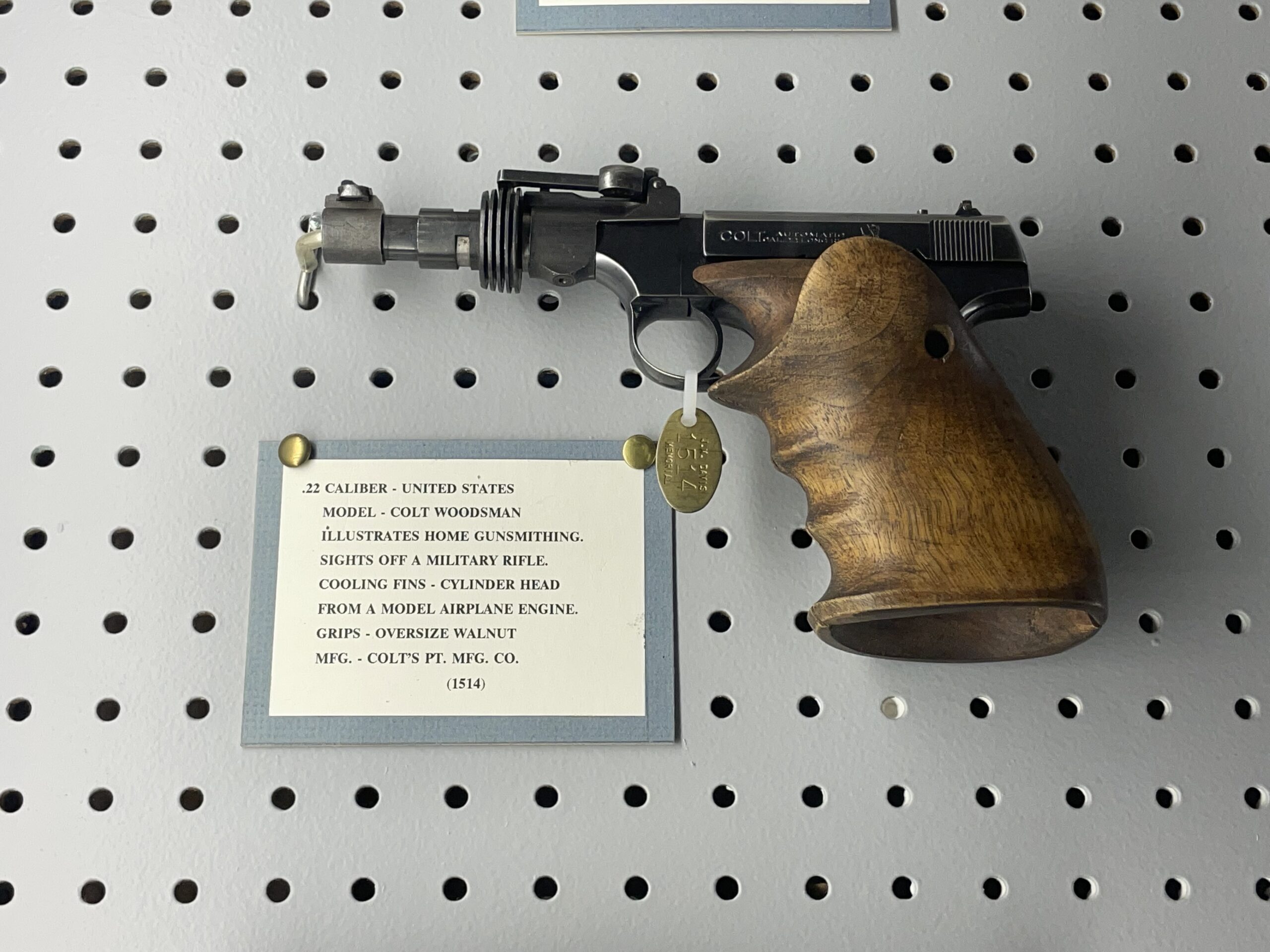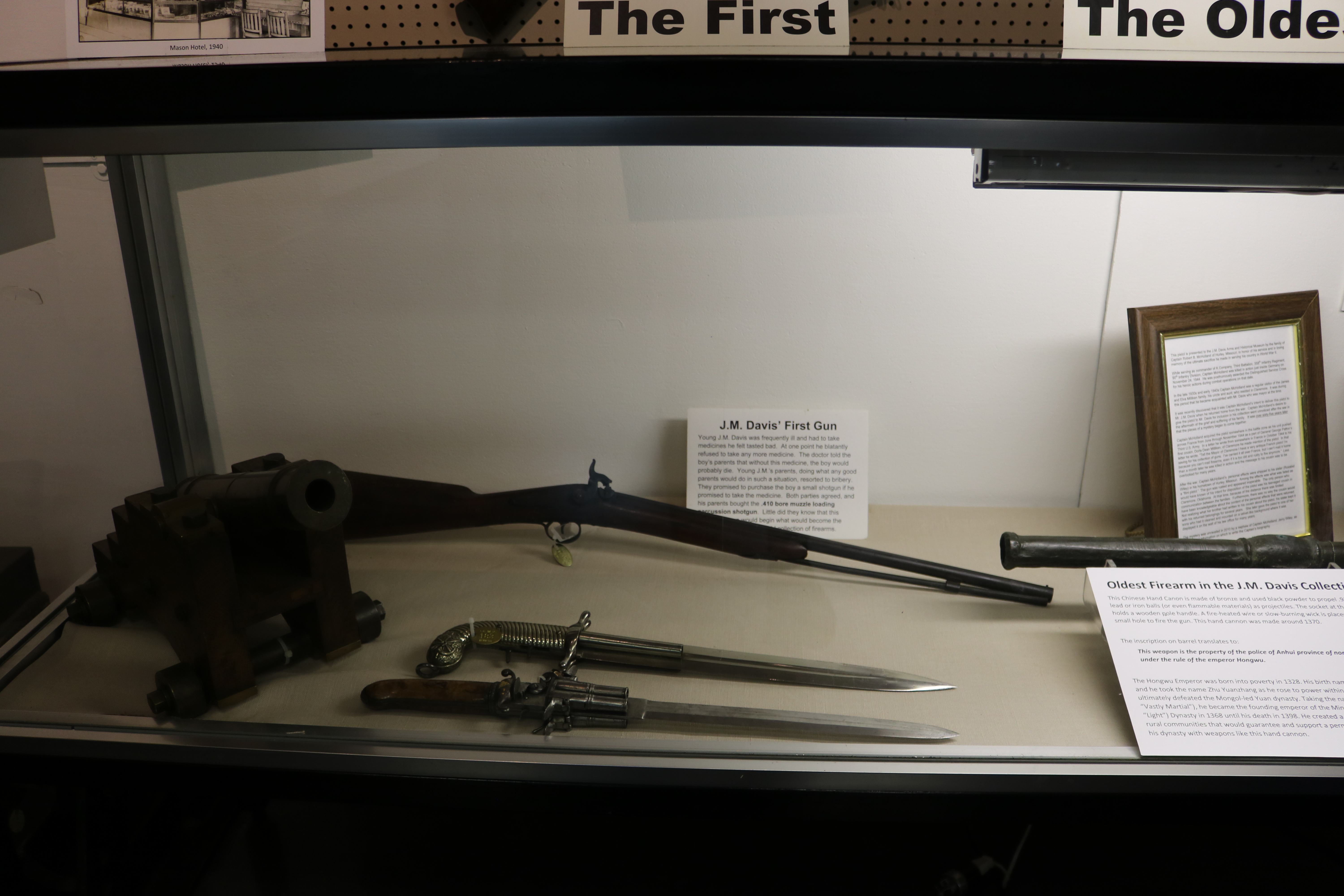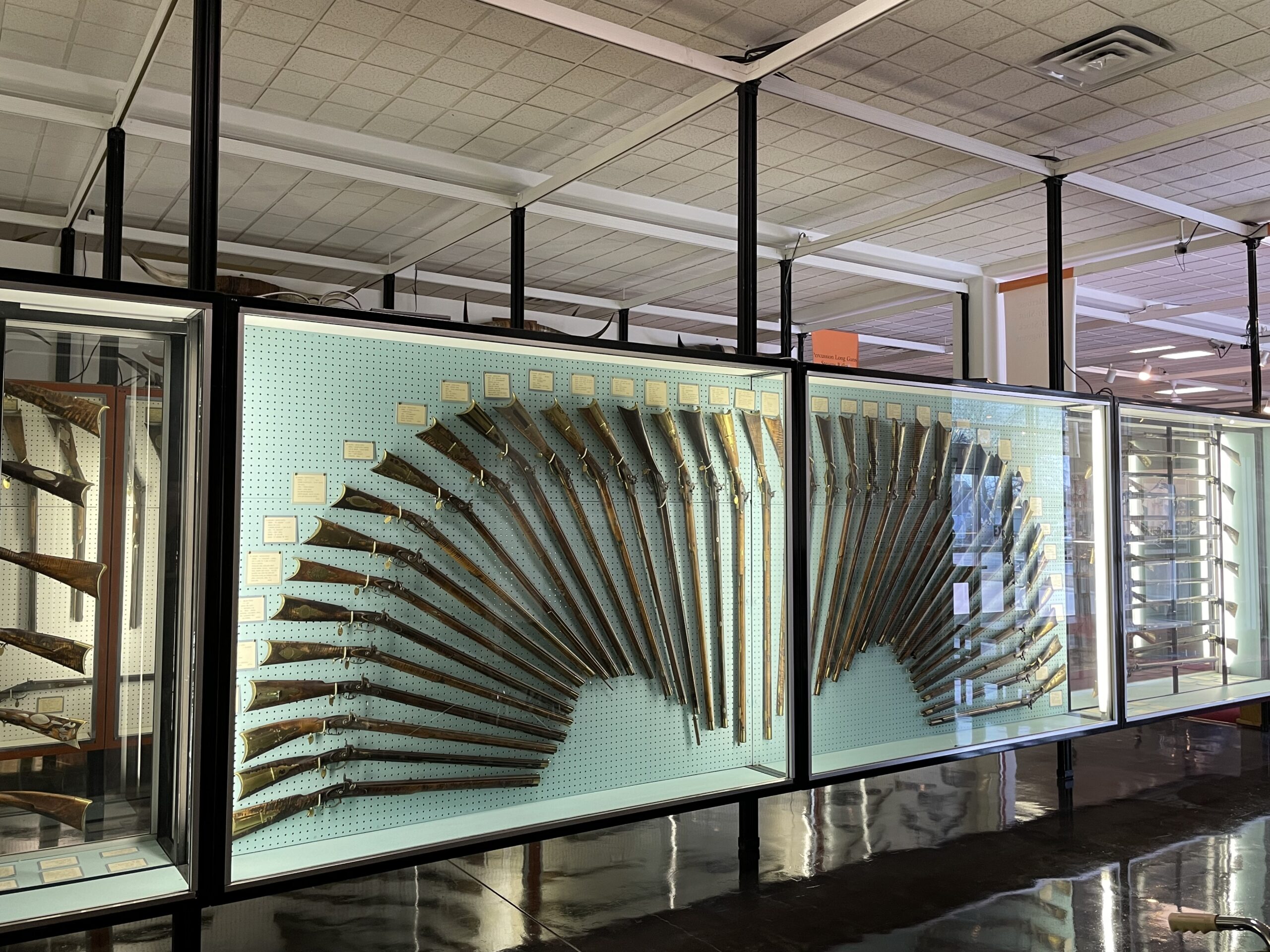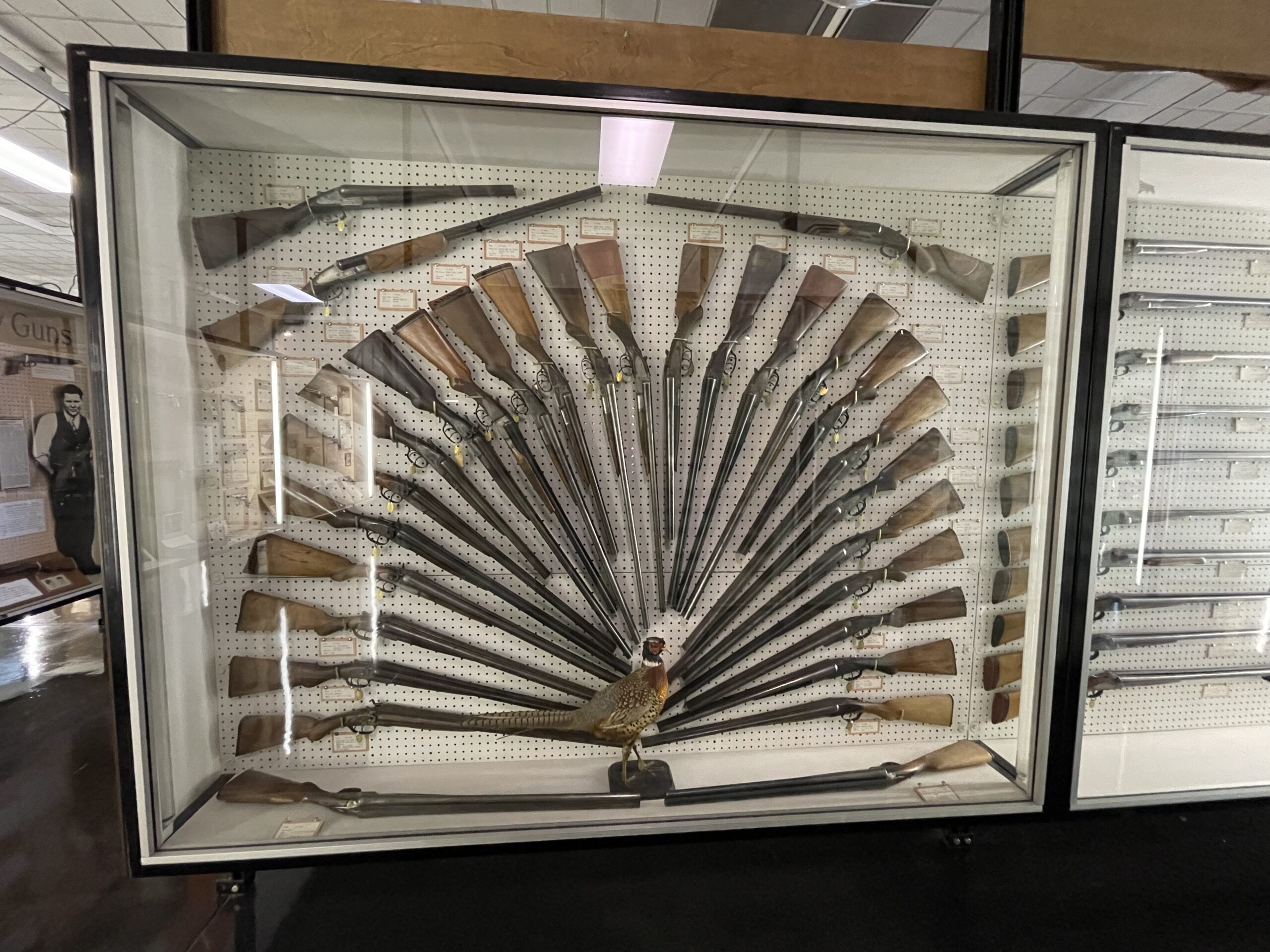J. M. Davis Arms and Historical Museum
330 N. J. M. Davis Blvd, Claremore, OK // (918) 341-5707
“Few museums have art and science exhibits of this caliber.”
J. M. Davis at the age of seven was chronically ill. No child likes taking medicine, but he refused to take the medicine that would help him. The doctors stressed to his parents that he would die without this life-giving drug. His dad resorted to bribery. If Davis took his medicine as instructed, then he would receive the .410 shotgun he so desperately desired. It worked. Davis took his medicine and acquired his first firearm. Thus began his lifelong passion.
Davis and his wife moved from Arkansas to Claremore, Oklahoma, during the oil boom days of Oklahoma. They purchased the Mason Hotel, exchanging their timberland in Arkansas for the Hotel. Davis became active in city government and served as Claremore mayor for 12 years. While managing the Hotel, he kept accumulating and researching guns and weaponry. When the holdings grew to 99 pieces, Davis displayed them in the Mason Hotel lobby. He purchased a few other large collections and occasionally took a gun as payment for rent during the depression. People also began giving Davis their guns of various types—it was seen as an honor to have a gun in his collection. It soon became a collection of 2500 artifacts. People staying at the Hotel and other visitors to Claremore enjoyed viewing this vast collection. Even more, they loved finding Davis at the registration desk eager to share his knowledge about and passion for these pieces.
Soon the Hotel was “decorated” with firearms—down the halls, in the lobby, and in the coffee shop. The banquet rooms even became storage for additional guns and historical artifacts. These included over one thousand beer steins (the smallest held an ounce; while the largest held six gallons), saddles, spurs, knives, swords, hangman’s nooses, and more. It was outgrowing the Hotel, and Davis needed a larger and more secure space. He and his wife had no children and therefore no one to keep the collection intact. So a different solution was sought.
Davis donated the vast collection to the State of Oklahoma after a deal was struck. First, he wanted the State to build a fireproof building for the artifacts. Second, and just as important to Davis, he wanted a guarantee that there would never be a charge to anyone desiring to view the collection. On his 82nd birthday in 1969, the Museum opened. The Museum houses 12,000 firearms and, together with other historical pieces, boasts over 20,000 artifacts.
One more request was made. Davis had always stated that he wanted to be “buried with his guns”. So the State of Oklahoma granted that request. He and his wife are buried in a black marble crypt inside the Museum. A Gatling Gun sits appropriately placed between the vault and the onlookers—pointed at the visitors!
This is indeed a fascinating museum to tour. Plan to spend a few hours. Then return another time to view all that you found that you missed the first time. I know that I will.

The tour begins in the room to the right of the entrance. There is a short introductory video to watch to get the museum’s history. The room is set up to resemble how the registration area of the Mason Hotel may have looked with guns arranged on the walls. Also in this room are three important pieces of the collection: Davis’s first gun—the .410 shotgun that fueled his passion for firearms; the oldest gun obtained—a Chinese firearm dated 1350; and the last gun received in the collection. The last gun obtained was actually received after Davis’s death and has a unique story. It was a cap and ball mid-eighteenth century gun found by Captain Robert McHolland in France during World War II. He had visited the Mason Hotel and was very impressed by the guns which Davis had acquired. He directed in a letter to his family that he wanted this gun to go to Davis should anything happen to him. Sadly, he died in Germany in the war and his belongings were sent to his relatives. A few wanted to keep this special piece, but years later, a relative found the letter of instruction and honored the Captain’s wishes by donating it to the Museum—in 2012, many years after Davis’s death in 1973.
Pistols from numerous manufacturers and countries capture the incredible variety that exists—much to my amazement.
And who knew that there was a 2.7 mm semiautomatic gun manufactured? It had an overall length of just 2 5/8″ and weighed in at just 2 1/2 ounces. It was created by an Austrian watchmaker in 1914.

Custom-made and “home” gunsmithing models are on display with some very unique styles. Take the following for example—a Colt with sights from a military rifle and the cooling fins from a model airplane engine cylinder head. Then it was completed with the huge walnut grip.

I have to point out the fabulous gold-plated pistols with mother of pearl handles! They were stunning yet used as US Army military pistols as well as British and Canadian military around 1911.

Not to be missed and one of the very popular and intriguing areas is the Gallery of Outlaw Guns. Firearms from Jessie James, Bonnie and Clyde, Wild Bill Hickok, and Belle Starr reveal the pure firepower these outlaws possessed. They had sawed-off shotguns, rifles, and six-shooters. In addition, there is a display of firearms from various lawmen.
Down row after row of long guns, the history and wide range of pieces were impressive. Early muscat rifles, rifles with bayonets, and military-grade firearms are all on display. I was impressed by the artistry and detail on some of the shoulder or butt stock.
Stroll down the row of military weapons for a fascinating look at the evolution of this type of firearm. Beginning with the Revolutionary War, through the Civil War, World War I and II, and up to Desert Storm, weapons development has been an amazing journey.
Oh, and if you get overwhelmed by firepower, visit the other historical artifacts on display—beer steins (thousands!), saddles, and musical instruments, to name a few.
I was so impressed with this Museum. It was bright (almost too bright in places for good pictures.) and easy to walk through. I had no idea of the sheer volume and variety of firearms that have existed. What a discovery it has been.
The Museum is located in Claremore, Oklahoma—right off of Route 66. It is a great stop to make while cruising down the Mother Road.















